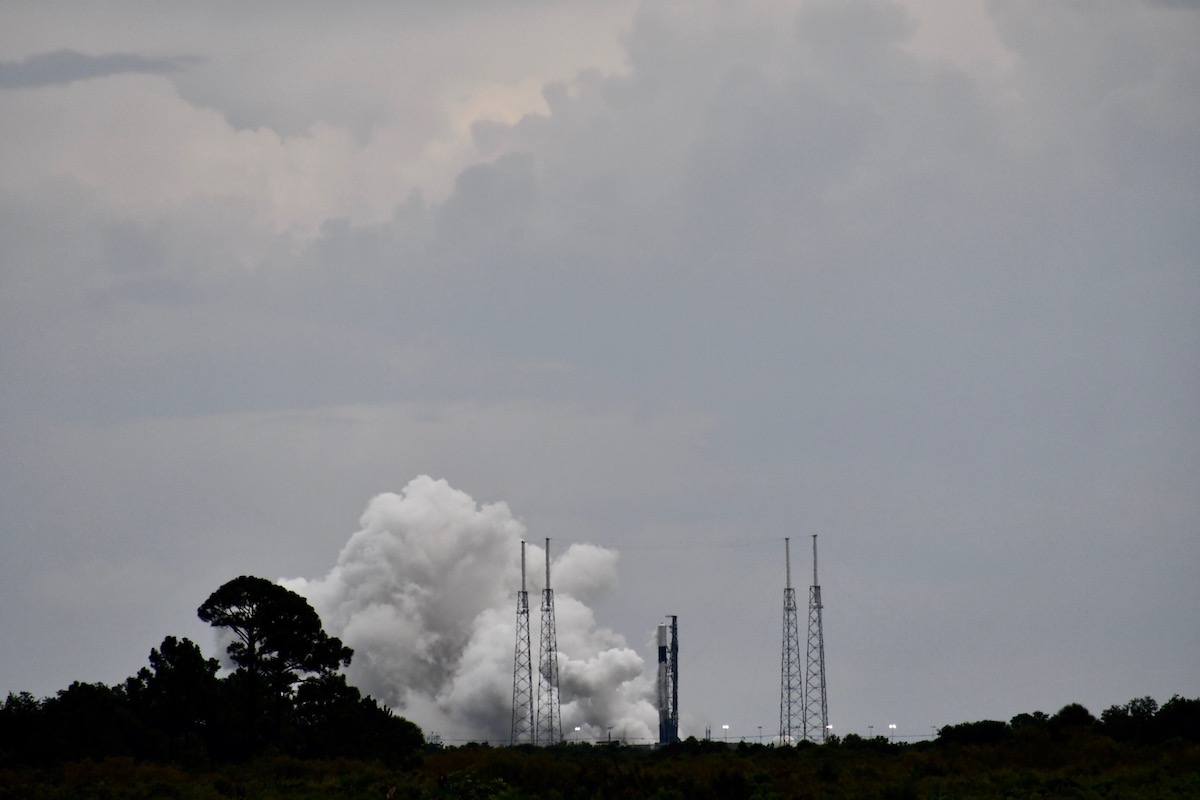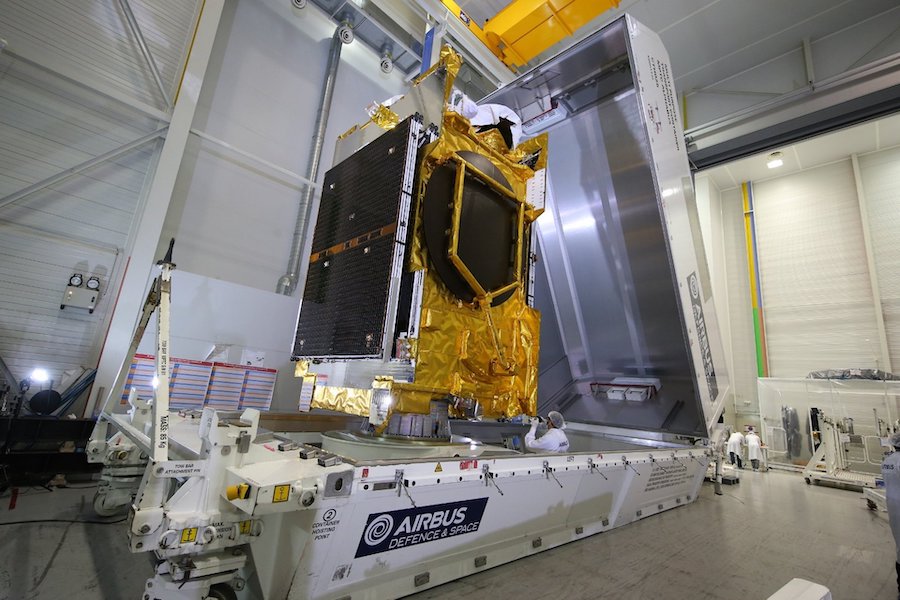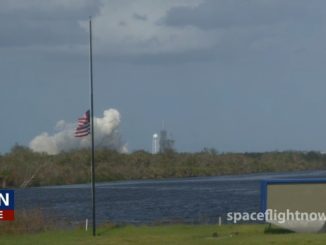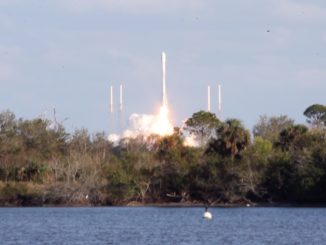
Hours after calling off a launch of a different rocket from a nearby launch pad, SpaceX’s launch team loaded a Falcon 9 rocket with propellant Saturday and fired its nine main engines on pad 40 at Cape Canaveral Air Force Station, setting the stage for a liftoff with a South Korean military satellite as soon as Tuesday amid a busy stretch of missions for the California-based rocket company.
SpaceX ground crews raised the Falcon 9 rocket vertical on pad 40 Saturday morning. An automated computer-controlled sequencer commanded super-chilled, densified kerosene and liquid oxygen into the Falcon 9 Saturday afternoon.
The countdown culminated in ignition of the rocket’s nine Merlin 1D main engines at 6 p.m. EDT (2200 GMT). The engines throttled up to full power, generating 1.7 million pounds of thrust for several seconds while clamps restrained the Falcon 9 on the launch pad.
Onlookers observed a plume of exhaust coming from the rocket and confirmed the the test-firing occurred. SpaceX was expected to officially release an update on the outcome of the static fire test after a quick-look data review.
The Falcon 9 will be lowered and rolled back inside SpaceX’s hangar near pad 40, where technicians will attach a European-made communications satellite named Anasis 2 built for the South Korean military.
Assuming the final days of launch preparations go according to plan, SpaceX plans to launch the mission Tuesday during a nearly four-hour window opening at 5 p.m. EDT (2100 GMT) and extending until 8:55 p.m. EDT (0055 GMT).
The static fire test Saturday for the Anasis 2 mission occurred the same day SpaceX planned to launch a Falcon 9 rocket from pad 39A at NASA’s Kennedy Space Center, located a few miles north of pad 40. SpaceX announced Saturday morning that it called off the launch from pad 39A “to allow more time for checkouts.”
SpaceX tweeted that teams “working to identify the next launch opportunity” for the mission from pad 39A, which will loft SpaceX’s next 57 Starlink broadband Internet satellites and a pair of commercial BlackSky Earth-imaging microsatellites.
The Starlink/BlackSky launch was supposed to take off June 26, but SpaceX delayed the mission to conduct additional pre-launch checkouts. A launch attempt Wednesday was scrubbed minutes before liftoff by poor weather.
The company has not disclosed any details about the nature of the problems — other than weather — that have delayed the Starlink/BlackSky mission. As of Saturday evening, it was not clear whether SpaceX might proceed with Tuesday’s planned Anasis 2 launch next, or if there might be another opportunity to launch the Starlink/BlackSky mission as soon as Monday.
SpaceX has launched 11 Falcon 9 missions so far this year, most recently on June 30, when a Falcon 9 rocket took off from pad 40 with a U.S. military GPS navigation satellite.

Developed by Airbus Defense and Space, the Anasis 2 satellite is shrouded in secrecy at the wishes of the the spacecraft’s owner — the South Korean government.
Anasis 2 is based on the Eurostar E3000 spacecraft platform made by Airbus, but details about its performance have been kept under wraps. The Anasis 2 satellite is expected to launch into an elliptical transfer orbit, then use its on-board propulsion system to reach a circular orbit at geostationary altitude more than 22,000 miles (nearly 36,000 kilometers) over the equator.,
South Korea purchased the satellite — formerly known as KMilSatCom 1 — through an arrangement to offset South Korea’s purchase of F-35A fighter jets from Lockheed Martin. Lockheed Martin ultimately subcontracted the satellite manufacturing deal to Airbus.
Before Anasis 2, South Korea’s military has relied on international and civilian-owned satellites for communications.
Email the author.
Follow Stephen Clark on Twitter: @StephenClark1.



